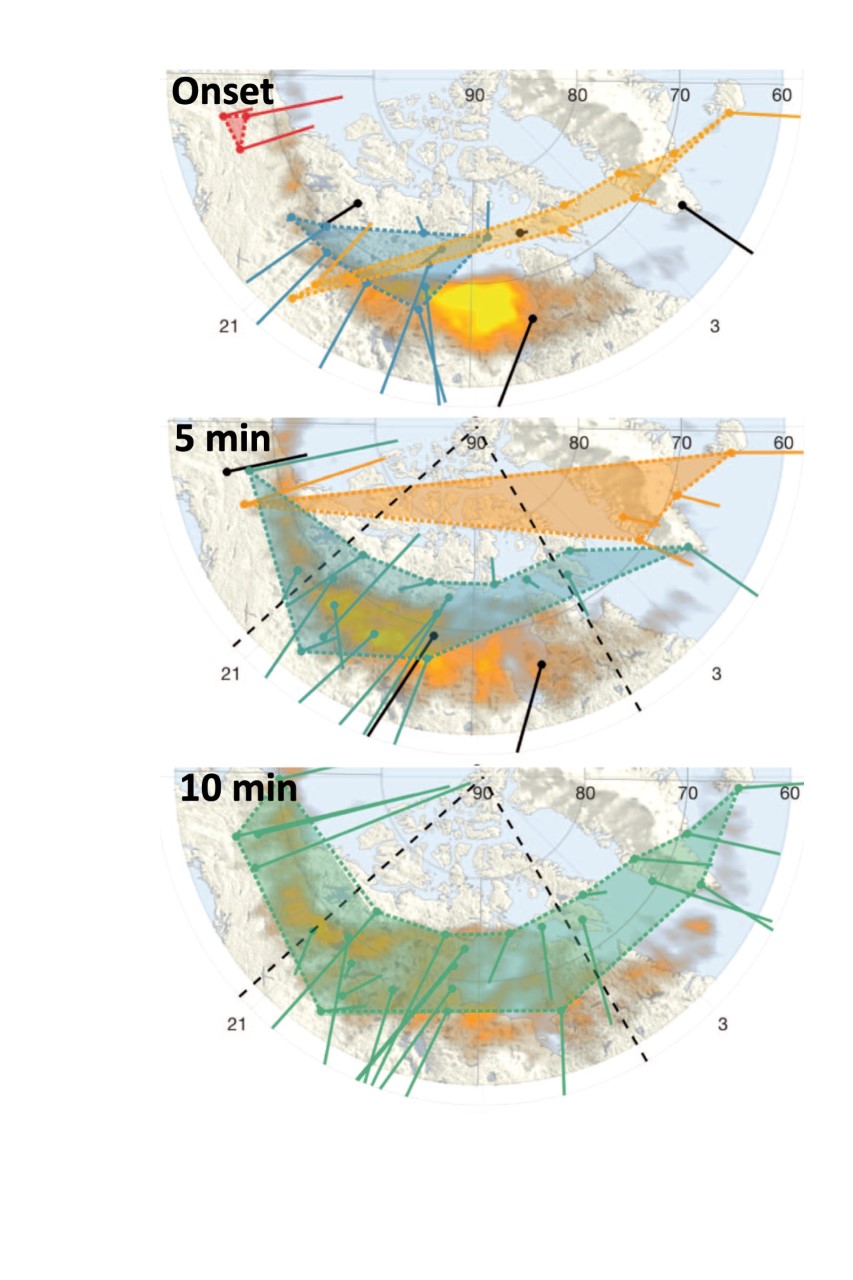Earth is constantly interacting with the surrounding space. Energy from the solar wind is stored in the Earth magnetic field and is subsequently released explosively leading to the spectacular auroral display. Key in this process is a vast electrical current system flowing between Earth and space known as the Substorm Current Wedge (SCW). Despite decades of research the basic configuration and evolution of this current system remain a mystery and a hotly debated topic.
In a new paper just published in Nature Communications by Orr et al. [2021], SuperMAG data from 137 ground-based magnetometers are used to perform an analysis of 41 geomagnetic substorms.
The results show that the SCW displays large-scale correlated behavior, inconsistent with recent hypothesis that this current system consists solely of multiple distinct meso-scale wedgelets.

The figure above shows that fragmented current systems exist at onset but a single coherent global current system rapidly develops. This is in conflict with the much promoted current wedgelet hypothesis.
Co-author and Professor II at the Birkeland Centre for Space Science, Jesper Gjerloev explains: «Ever since the original SCW model was proposed in 1974 a steady stream of models have been proposed. The reason is simple – the vastly increased set of observations made since the original study simply do not fit the model. Lately, a new model has received a lot of attention as it provides an appealing relationship between well-known fundamental processes in space and the ionospheric currents. Our paper was designed to provide a test of this hypothesized solution and we found that although it is a wonderful cause-and-effect model it unfortunately does not agree with observations.»
The new paper has already drawn lots of media attention, as shown by the list below:
- (22) Infosurhoy
- (21) Maniac Geek
- (20) Science Daily
- (19) Phys.org
- (18) Mirage News
- (17) Bioengineer
- (16) Citizen Side
- (15) Samachar Central
- (14) IFL Science
- (13) UPI
- (12) Space Daily
- (11) In Terris
- (10) Florida News Times
- (09) Brinkwire
- (08) SpaceRef
- (07) NewsBreak
- (06) Zephyrnet
- (05) Scienmag
- (04) DailyAdvent
- (03) Urallnews
- (02) Copernical
- (01) Bollyinside




